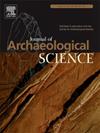Current methods and theory in quantitative zooarchaeology
IF 2.6
1区 地球科学
Q1 ANTHROPOLOGY
引用次数: 0
Abstract
Zooarchaeology has undergone a significant transformation in recent years, evolving from a discipline focused on human-animal relationships to a broader investigation of the complex interplay between humans, animals, and environments. This shift is driven by advancements in methodologies, including geometric morphometrics, low-magnification dental dietary analysis, and palaeo-species distribution modelling, which allow for detailed phenotyping and environmental reconstruction. By adopting a niche construction framework, zooarchaeologists can explore the multifaceted ways in which humans and animals have shaped their environments and been shaped by them. This approach offers a unique perspective on the Anthropocene, a geological epoch characterized by human-induced global change. By examining the long-term consequences of human ecosystem engineering, zooarchaeology contributes to a deeper understanding of our impact on the planet and the future of human-animal relations.
定量动物考古的最新方法和理论
近年来,动物考古学经历了重大的转变,从一门专注于人与动物关系的学科发展到对人、动物和环境之间复杂相互作用的更广泛的研究。这种转变是由方法论的进步所驱动的,包括几何形态计量学、低倍率牙科饮食分析和古物种分布模型,这些模型允许详细的表型和环境重建。通过采用生态位构建框架,动物考古学家可以探索人类和动物塑造环境以及被环境塑造的多方面方式。这种方法为人类世提供了一个独特的视角,人类世是一个以人类引起的全球变化为特征的地质时代。通过研究人类生态系统工程的长期后果,动物考古学有助于更深入地了解我们对地球的影响以及人类与动物关系的未来。
本文章由计算机程序翻译,如有差异,请以英文原文为准。
求助全文
约1分钟内获得全文
求助全文
来源期刊

Journal of Archaeological Science
地学-地球科学综合
CiteScore
6.10
自引率
7.10%
发文量
112
审稿时长
49 days
期刊介绍:
The Journal of Archaeological Science is aimed at archaeologists and scientists with particular interests in advancing the development and application of scientific techniques and methodologies to all areas of archaeology. This established monthly journal publishes focus articles, original research papers and major review articles, of wide archaeological significance. The journal provides an international forum for archaeologists and scientists from widely different scientific backgrounds who share a common interest in developing and applying scientific methods to inform major debates through improving the quality and reliability of scientific information derived from archaeological research.
 求助内容:
求助内容: 应助结果提醒方式:
应助结果提醒方式:


